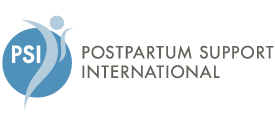Understanding Perinatal OCD Part I
Understanding Perinatal OCD Part I
Catherine Benfield
In order to recognize Perinatal OCD (Obsessive Compulsive Disorder), it’s important to understand the way OCD works and that can sometimes be easier said than done. When people ask me what OCD is, my first instinct is to ask them to pull up a chair so I can explain it properly – it’s not an easy disorder to sum up in a few words.
OCD has been described as an intolerance to uncertainty. It’s been described as a doubting disease. For me, OCD was like trying to live my day to day life whilst dragging around a huge boulder with a panicked and jagged ‘what if?’ scratched into it.
To be able to identify OCD and therefore begin treatment and recovery, we need to have a clear and comprehensive understanding of what it is. I’m going to try to do that justice now.
So please, pull up a chair…
What is Obsessive Compulsive Disorder?
OCD is an anxiety disorder and is thought to affect 1-2% of the population. It is a condition surrounded by a great deal of misunderstanding and misconception – with the term often being used incorrectly to describe those with a love of order, perfection or cleanliness. Thankfully, because of advancements in recent awareness and education, this is changing!
At its simplest, OCD can be described as a condition characterised by obsessions and compulsions.
Obsessions are often referred to as unwanted recurring intrusive thoughts although they can also be experienced as images, urges, bodily sensations and/or doubts. Obsessions cause a great deal of distress, because they often centre around harm coming to loved ones, or the things the individual holds most dear.
To reduce the anxiety brought on by the obsessions, those with OCD carry out compulsions. Compulsions are certain behaviours which the sufferer feels compelled to carry out – they could be a physical action or a mental ritual. The relief felt having carried out a compulsion is only felt momentarily, and very soon the individual will find themselves wanting to repeat the behaviour again and again until they get caught in an OCD cycle – a state where the compulsions drive the obsessions and vice-versa. It doesn’t take long for the symptoms to intensify to the point where daily life can be seriously impeded.
It’s worth noting that almost anything can become the focus of an obsession. I’ve yet to meet two people with exactly the same symptoms and I’ve spoken to hundreds of people with OCD. What is common in all is the obsession is the compulsion loop.
What is Perinatal Obsessive Compulsive Disorder?
*** Please be aware that perinatal OCD can also be referred to as Maternal OCD, Postnatal OCD, Perinatal OCD and Postpartum OCD. There is further reading available under each.***
Again, at its simplest, Perinatal OCD is OCD that presents in the perinatal period. Although the condition is highly misunderstood and under-recognised, studies suggest that Perinatal OCD affects 1% of women in pregnancy and 2.9% of women in the postnatal period (Torres et al, 2006).
Amazingly, and just as a comparison, studies have also found that anxiety disorders are more common than depression in mothers during the perinatal period – something that is not reflected in the level of awareness and identification for both conditions (Matthey et al, 2003). It’s also worth noting that although, there is sadly very little research currently available on fathers and Perinatal OCD, dads are affected by the condition too. Actually, I’m going to quickly pop in here too that the birth of a child can bring about OCD symptoms in grandparents, other family members, and friends too.
New parents may find that their previously existing symptoms of OCD intensify in the perinatal period, with their obsessions shifting to focus on their children, or they may experience OCD for the first time after becoming a parent. It has been suggested that a heightened sense of responsibility and an increase in harm-centred thoughts during the perinatal period could lead to onset.
And just like in general OCD there are many, many ways it can manifest.
The obsessions associated with perinatal OCD could present as persistent doubts about the safety of the child or as reoccurring ‘what if?’ questioning and thinking. They could come in a series of images in which harm comes to the child, or non-image-based thoughts of the same nature.
Individuals with perinatal OCD, just like general OCD, also feel driven to carry out compulsions as a way of stopping the perceived harm happening. Compulsions could range from staying up all night to check on their child’s breathing, to excessively cleaning to stop the spread of contamination. Certain people may be discouraged from seeing the child or it may be insisted upon that the child remains in the house at all times. Parents may spend hours checking for information on the internet or undertaking mental rituals such as reviewing or replaying events in the past, praying, or mentally repeating sentences and words. All of these behaviours are designed to keep baby safe and to prevent harm coming to loved ones.
A particularly distressing, yet common, side of Perinatal OCD, is one that involves parents worrying that they themselves pose a risk to their child. They may experience intrusive thoughts or urges about deliberately harming or abusing their child. It is essential to know that these are experienced by most new parents and to make this point clearer I’m going to include studies to support the following points.
Study after study shows that intrusive thoughts about infants are common in new mothers and fathers (Jonathan S. Abramowitz, Schwartz, & Moore, 2003) and that that intrusive thoughts of all types, including deliberate and accidental harm, are experienced by mothers who do not have OCD (Fairbrother & Woody, 2008). The difference between those with OCD and those without is the way the thoughts are interpreted, NOT the fact they happened in the first place. (J. S. Abramowitz, Khandker, Nelson, Deacon, & Rygwall, 2006).
So, as we can see, intrusive thoughts of this nature are common in new parents. In anxiety and OCD, the thoughts aren’t the problem – it’s the interpretation – and the subsequent distress, that causes the issue.
In terms of compulsions parents, fearing they pose a risk to their child, may begin to avoid them as a way of securing the child’s safety. They may leave the family home or refuse to be left alone with their children. Parents might remove knives from the house, double-lock all windows, or sit on their hands. Those with OCD may question others repeatedly about the nature of their own thoughts and experiences as a way of checking their perceived level of risk and looking for reassurance.
They may also undertake mental rumination, which is much, much harder to identify. Parents may ‘bring on’ thoughts of harming their child or urges to harm their child as a way of checking to see whether or not they want to carry out their thoughts. This is often additionally distressing as the rise in these thoughts and urges serve to further convince the parent they are a risk to their child’s safety. Parents may often review upsetting memories of times they previously made mistakes as a way of checking their character and therefore the likelihood of them being able to carry out their thoughts. Both of these are examples of mental checking – the internal version of rechecking that the oven’s turned off.
As a quick note: OCD with mental compulsion is often referred to as Pure O, which stands for purely obsessional OCD. It’s a term that gets mixed reactions from those with OCD because it implies there aren’t compulsions when there are – they’re just mainly unseen and being performed mentally, but it is a term that’s useful for you to know for your own research and resource hunting.
Treatment and Recovery
It is so important to remember that OCD responds well to treatment, most noticeably, Cognitive Behavioural Therapy with Exposure and Response Prevention, and/or medication.
I talk in detail in the second article of this series about the things I did to help my recovery so I will leave this part here. Please note that I am not a professional and am completely unqualified to discuss treatment options but what I can say is that there are excellent OCD charities nationally that will be able to support you and give you the correct information, most notably in the U.K. OCD Action, Maternal OCD and OCD-UK and in the U.S. the International OCD Federation.
Conclusion
In summary, OCD is a disorder that can create devastation for both the person with OCD and their loved ones. It is a disorder surrounded by much misconception and stigma, although thankfully this is changing. I am also encouraged to see more and more research on perinatal OCD happening. With the correct support, new mothers and fathers experiencing OCD can quickly get back to the job they most wanted to do in the first place –be wonderful, healthy, parents to their children.
Catherine Benfield is a primary school teacher from East London and she has experienced OCD since childhood. Catherine is an OCD advocate, founder of the blog Taming Olivia, and has shared her story on international platforms such as BBC News and Women’s Health Magazine. She is a volunteer for the OCD Action and Maternal OCD charities. Catherine lives in London with her husband and son.
Citations
- Abramowitz, J. S., Schwartz, S. A., & Moore, K. M. (2003). Obsessional thoughts in postpartum females and their partners: Content, severity and relationship with depression. Journal of Clinical Psychology in Medical Settings, 10, 157–164.
- Abramowitz, J. S., Khandker, M., Nelson, C. A., Deacon, B. J., & Rygwall, R. (2006). The role of cognitive factors in the pathogenesis of obsessive-compulsive symptoms: A prospective study. Behaviour Research and Therapy
- Fairbrother, Nichole, and Sheila R. Woody. “New Mothers’ Thoughts of Harm Related to the Newborn.” Archives of Women’s Mental Health, vol. 11, no. 3, 2008, pp. 221–229., doi:10.1007/s00737-008-0016-7.
- Matthey, Stephen, et al. “Diagnosing Postpartum Depression in Mothers and Fathers: Whatever Happened to Anxiety?” Journal of Affective Disorders, vol. 74, no. 2, 2003, pp. 139–147., doi:10.1016/s0165-0327(02)00012-5.
- Torres AR, Moran P, Bebbington P, et al. Obsessive-compulsive disorder and personality disorder. Social Psychiatry and Psychiatric Epidemiology. 2006;41(11):862–867


